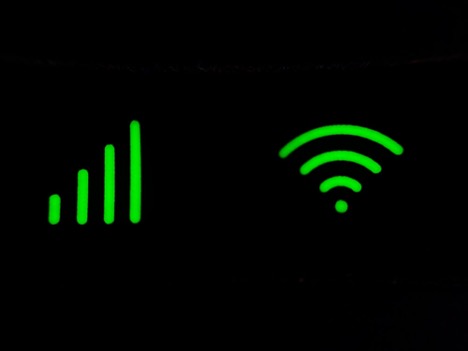Table of Contents
Introduction
Prometheus was originally developed in 2012 and has grown in popularity since then. It's an open-source systems toolkit that monitors and alerts. While it was developed for SoundCloud, the project is now independent and standalone.
Why would you need this model? It comes with several features, but perhaps the most important ones are the fact that it offers multiple graphing modes, and dashboard support, and does not rely on distributed storage. Instead, it uses autonomous single server nodes. The data model used by Prometheus is a multi-dimensional one that offers time series data which is identified via metric name, as well as key/value pairs.
Data is scraped from assorted instrumented jobs via direct contact or through a push gateway for short-lived jobs. The information is then aggregated and, depending on what is processed, the system generates alerts or records new time series.
We no longer provide our hosted Prometheus service, but if you are interested in a hosted monitoring solution, please consider starting MetricFire's Hosted Graphite free trial today. Also, talk to us directly by booking a demo - we're always happy to assist you with your company's monitoring needs.
Key Takeaways
- Prometheus is designed for monitoring and alerting, offering features like multiple graphing modes and dashboards without relying on distributed storage.
- The data model used by Prometheus is multi-dimensional, providing time series data identified by metric names and key/value pairs.
- Data is collected from instrumented jobs either directly or through a push gateway for short-lived jobs, and Prometheus can generate alerts and record new time series based on the processed data.
- Prometheus consists of several components, including the main server, client libraries, push gateway, exporters, Alertmanager, and optional support tools.
- The Prometheus rate function calculates the average per-second rate of value increases and is useful for monitoring server CPU usage, request rates, and more.
Components of the Prometheus System
The Prometheus system involves several components, which include the following:
- Main server: This scrapes and stores data.
- Client Libraries: These contain codes that can be applied to other projects.
- Push Gateway: This supports shorter jobs.
- Exporters: When using Prometheus with services like Graphite or HAProxy, you'll use exporters.
- Alertmanager: This option handles any alerts.
- Support tools: These are optional, but make life simpler for users.
Most of the components are optional, so you can choose which ones you feel you need most. It's also important to have a monitoring stack for your company. MetricFire offers this to help your company predict trends and increase functionality.
If you'd like to try our Prometheus alternative for yourself, sign up today for a free trial of our hosted Graphite or sign up for a demo.
What Is Prometheus Rate?
The Prometheus rate function is the process of calculating the average per second rate of value increases. You would use this when you want to view how your server CPU usage has increased over a time range or how many requests come in over a time range and how that number increases.
Prometheus uses PromQL as a query language on the backend.
What Are the Use-Cases of Prometheus Rate?
Wondering what Prometheus query rate can be used for? It is best when monitoring things that do not need to be precise. The data collected by the monitoring system is rarely enough to put out super precise results. However, here are a few use cases for the Prometheus rate.
It can monitor stateless or stateful applications, as well as web servers and a Linux or Windows server. However, the platform's capabilities go much further, and it can help eliminate mundane tasks that you don't want to waste valuable employee hours on.
The Prometheus rate may be used to calculate SLIs, to ensure that a company has not violated the SLO/SLA. It's also used to set up alerting and recording rules for when you should be alerted once errors appear. It can be integrated with Docker and Kubernetes for more functionality.
More specific examples:
Using Prometheus to import metrics for a cloud hosting business. This allows cloud-based companies to provide exactly what their clients need, based on info collected and processed. While Prometheus collects that data, you'll need something like MetricFire to help you process and visualize it.
Online gaming companies can also use Prometheus via a hosted system to ensure they rise above the competition. Real-time visibility is essential for online gaming, so monitoring and having an instant rate and instant vector is essential. Not only that but if there is any type of gambling in the game, such as online poker or casinos, there are also several regulations to follow. Using Prometheus rate to monitor everything helps ensure the gaming company complies with the regulations. Memory usage is also important to pay attention to since it determines the scrape interval.
Tracking things like passports or health cards is a growing need in most countries, and this is an area where Prometheus excels. The information collected by self-check-in kiosks can be instantly collected and monitored. If there are any problems that may cause a security issue, the alerting system will let those in charge know.
Another way to use Prometheus is in tracking and monitoring healthcare information. It's easier to treat patients when you have all the facts, so consider compiling the information and then using something like MetricFire to visualize the data points provided. Data science companies can even use it as they work on alternative methods of delivering treatment, something that is particularly important these days for any time-series database.
If you need to process anything that isn't immediately available via the Prometheus rate, you can look at the client databases to find the codes you need. This makes it quite simple to get what you need from the system, whether or not you're used to using it or accustomed to coding. Often, the code you need is readily available, but you may need to tweak it slightly to fit your needs.
How Can MetricFire Help?
MetricFire no longer provides hosted Prometheus, however, we do provide Hosted Graphite with Grafana, to give you the infrastructure you need. Our platform lets your business collect and store data from any source and then visualize time series data when needed. It can work with any metric type you need.
If you'd like to learn more, we have a free demo you can try. You can sign up for a free trial and speak to one of our MetricFire engineers!



